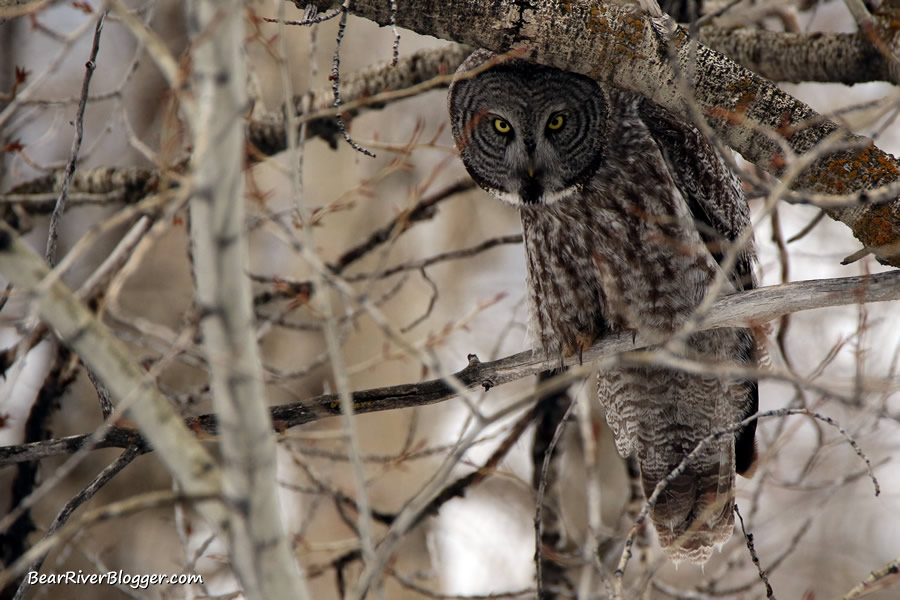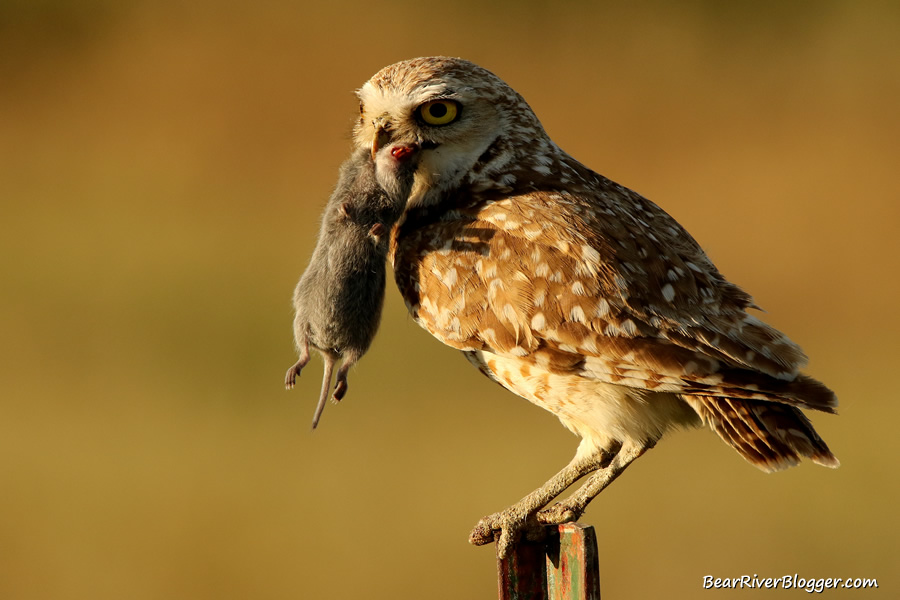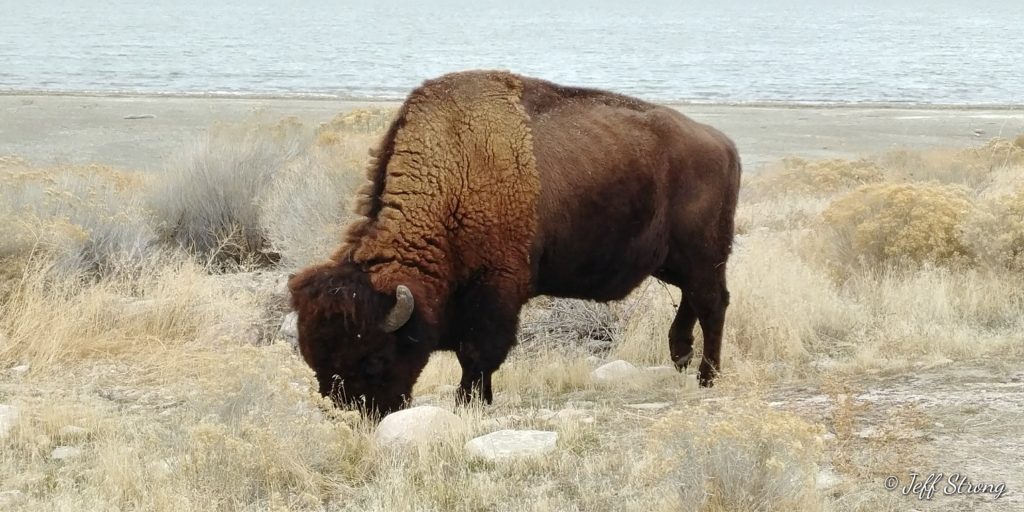Sitting here at my desk on this cold, cloudy November morning, I find myself a little bit distracted from my writing duties. You see, not far from me, maybe 75 feet or so, sits a great horned owl casually perched in one of my large trees.
It’s not clearly visible from this photograph but there is indeed an owl in that tree. An agitated male American kestrel will attest to that if there is any doubt.
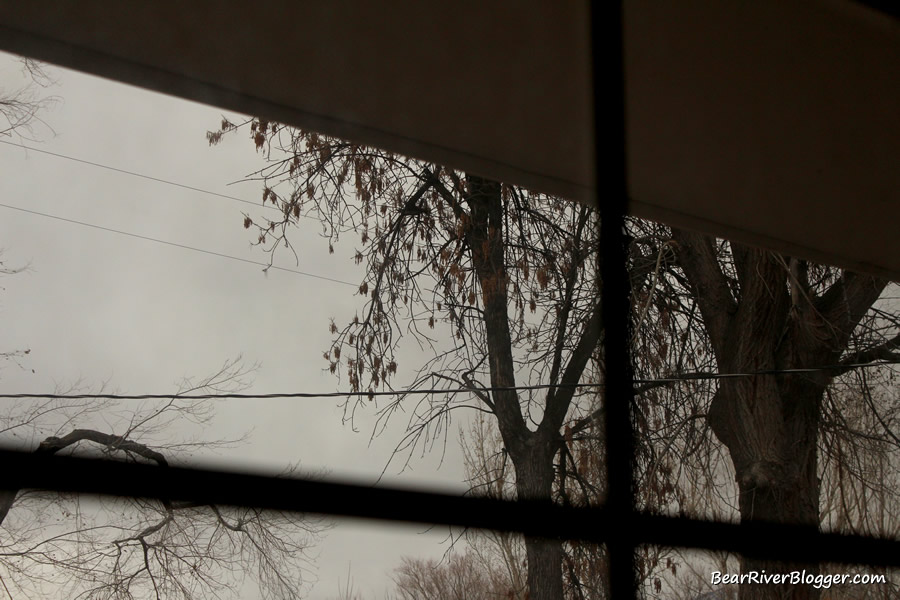
This owl is one of two that are currently residing in my yard and was the inspiration for my most recent blog post about the great horned owl. I thought today I would build upon that and give a little insight on owls here in Utah and where people can find a few of the more common species.
What owls live in Utah
Utah has 14 species of owls that have been recorded to either live in or, at the very least, have made a rare occurrence somewhere in the state.
This includes the barn owl, flammulated owl, western screech owl, great horned owl, snowy owl, northern pygmy owl, elf owl, burrowing owl, spotted owl, great gray owl, long-eared owl, short-eared owl, boreal owl, and northern saw-whet owl.
That is quite a list, but a few of those, including the snowy, great gray, and elf species, are listed as accidental, meaning it is quite a rare occasion when they are observed here in Utah. For a complete list of Utah birds and their commonality, including owls, I would suggest taking a look at the Utah bird checklist.
A quick word about owl etiquette before we get started
Giving out locations of nesting birds is quite a controversial topic. I do agree there is a lot of risk in letting the public know of nesting sites, but the few that I will refer to here are actually pretty well known and are both well-protected sites on state and federal managed lands.
As a general rule, observing nesting owls, or any nesting bird for that matter should only be done from a distance as to not disturb the birds from their parental duties. Please give all nesting birds their due and much-needed space as you enjoy them.
I am, however, a believer that we need more people interested in birds to help sway the government to protect vital bird habitat. And to do that, ironically, more people need to get out and experience the joy of bird watching to help foster this interest and political support for birds.
But that does, however, come at a cost as some people don’t abide by the laws of common sense, and they, unfortunately, neglect to give birds their rightful space.
When viewing birds, be prepared and bring binoculars, a spotting scope, or a camera with a good lens. Sometimes, these items aren’t needed but sometimes they are what makes the difference between safely observing a bird and being a nuisance and possibly disturbing nature in the process.
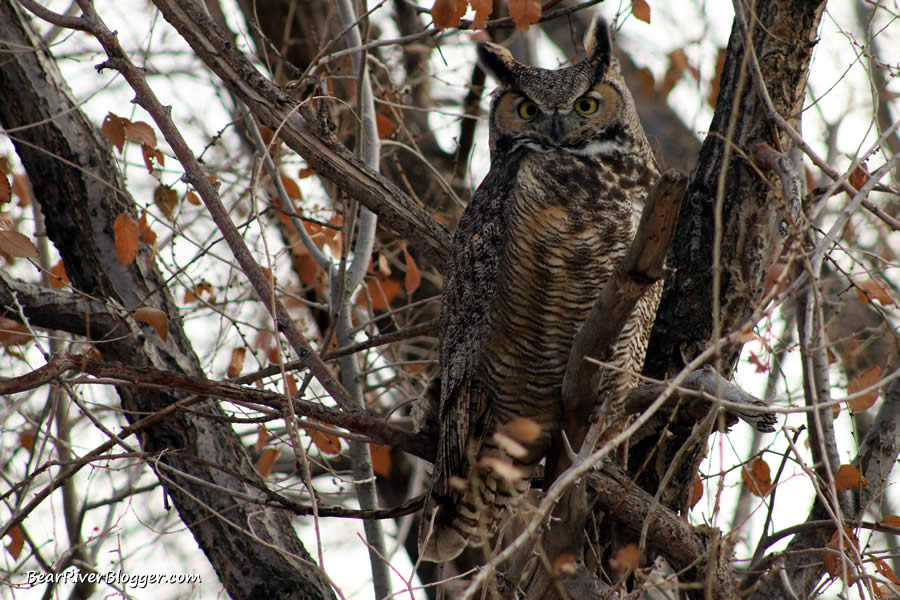
As an example of this from about 20 years ago or so, a great horned owl nest was found along a busy interstate highway here in northern Utah. I traveled the road daily to and from work and would notice the trademark great horned owl profile sticking up above the large nest as it tended to its duties.
Unfortunately, the large nest was literally just a few short feet from the edge of the freeway in an old cottonwood tree and very conspicuous to drivers heading north on the interstate.
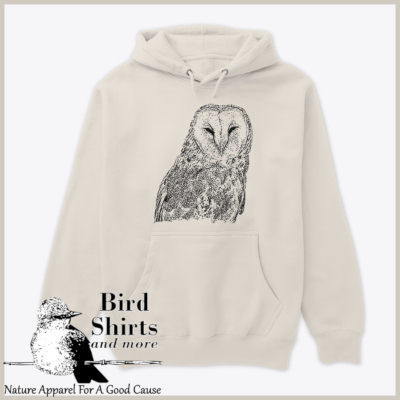
Over time, the owl profile started to get attention, and people would stop and park right under the nest in hopes of getting a “closer look”. Well, to make a long story short, this close attention caused the owl to leave a week or so later, never to be seen again.
It is sad people had to stop and get so close to the nest that the owl felt threatened and eventually disappeared.
Too much attention in too close proximity like this will cause just about any bird to abandon the nest. In situations like this, we need to think of the birds first and give them their space while around an active nest such as this.
Great horned owl
This has to be one of my most favorite species of birds. Seeing a great horned owl is nothing short of spectacular, in my opinion. As noted in a previous blog post, I am very fortunate to have these owls as a common visitor to my yard for many years now.
Each day, as part of my morning routine, I keep an eye out for owl pellets on the ground, and it is almost a daily occurrence I find one.
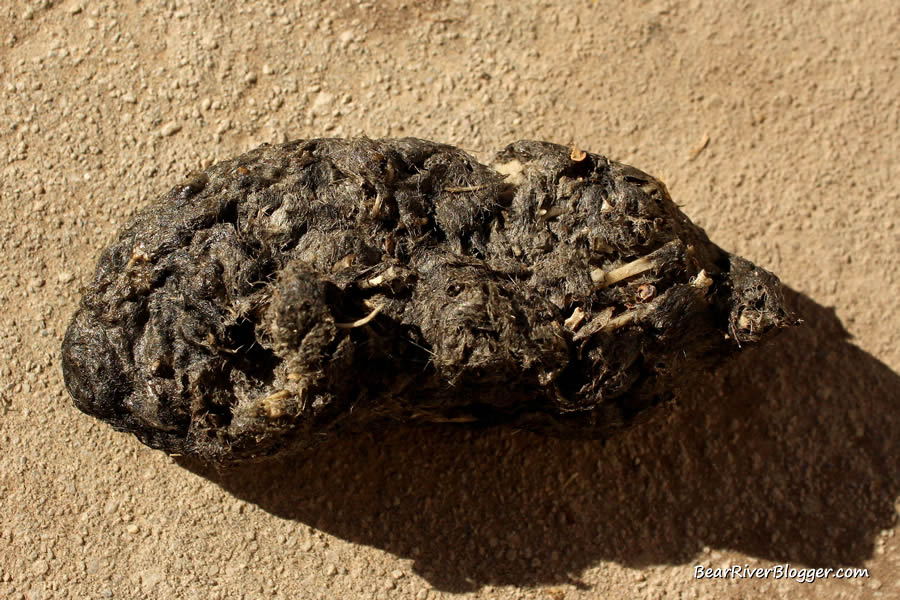
Great horned owls are very widespread across North America as well as here in Utah. But even though they are considered common, viewing one is not as easy as it would seem.
They are nocturnal creatures and rarely observed during the day unless you are fortunate enough to come across a roosting great horned owl in your travels.
A couple of places I can suggest to find a great horned owl here in Utah is both the Bear River Migratory Bird Refuge and Antelope Island State Park. Both locations have a consistent pair or two of great horned owls in a relatively easy viewing location.
The Bear River Migratory Bird Refuge has a nesting platform in a well-protected area on the backside of their maintenance shed at the start of the auto tour route. Nesting owls can often be seen during late winter and spring on the platform.
This particular nest is guarded by not only a chain-link fence but part of the Bear River sits between you and it, but it is in a very easily observed location for spotting the owls.
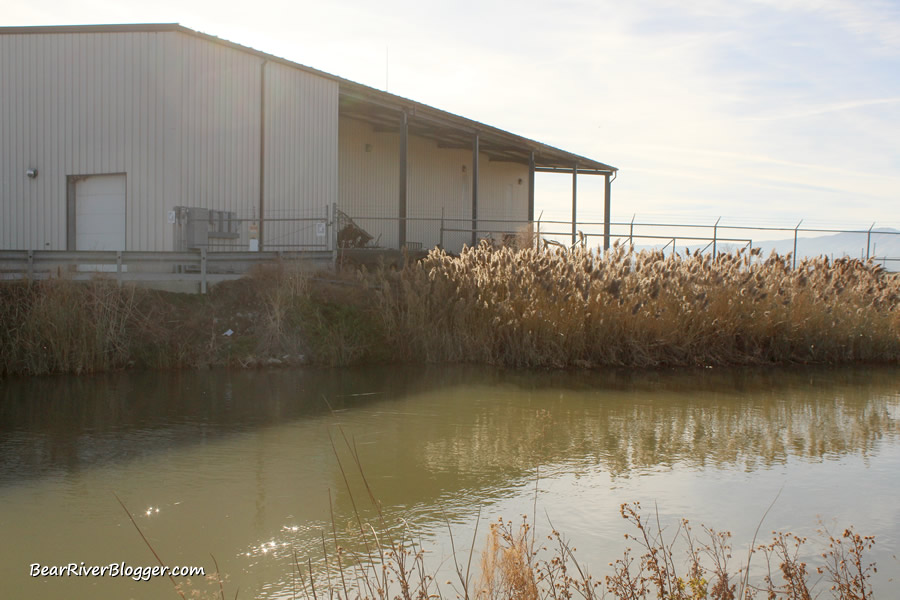
I have observed great horned owls on the auto tour route itself and also on Forest Street, but such sightings are pretty rare at best.
Antelope Island State Park has a couple of locations where great horned owls can be found. The most consistent one is the park’s hay shed near the bison corrals. Nesting boxes have been placed high up in the rafters, and great horned owls are commonly found roosting high up in the ceiling of this large metal structure.
Another location where these rather large and majestic owls can be found is at the Garr Ranch location on the southern portion of the island. A large stand of trees at the ranch oftentimes serves as a nesting site for great horned owls, although I have never seen the nest myself.
I have seen owlets and adult owls in the very tall trees quite consistently, so it is a spot great horned owls on the island do frequently use.
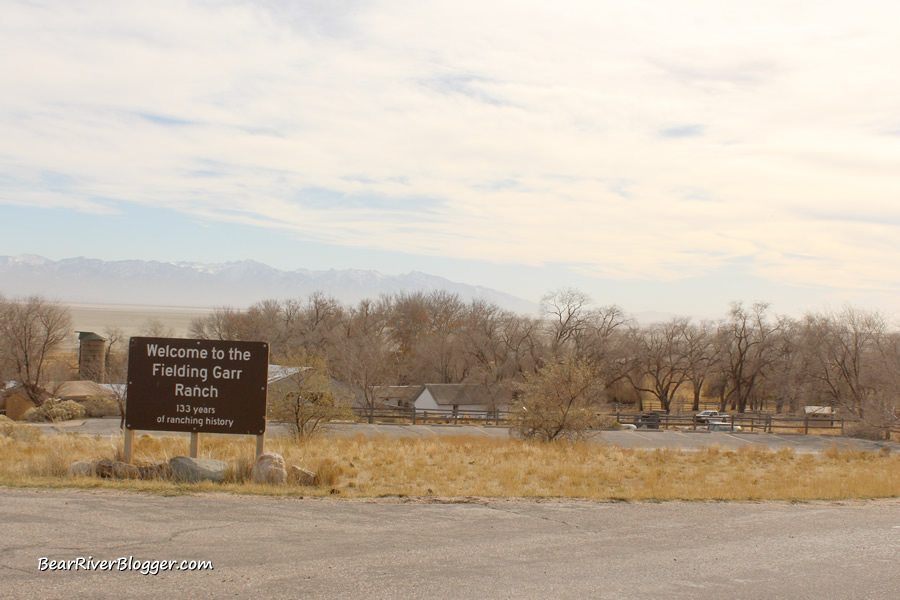
Great gray owl
A few years ago, quite a stir was caused by a very rare visitor to Utah. A great gray owl made its way down to Utah and resided in the small northern town of Mountain Green for several weeks or more. It caused quite a lot of excitement among birders as well as photographers as this was a very rare occurrence.
I too, found myself looking for this owl on numerous occasions. I did indeed find it a few times on some very cold and rainy days. Unfortunately, such poor conditions resulted in the images being less than what I had hoped for.
Even though, just seeing such an iconic owl was certainly a thrill any birder will never forget. I know I won’t.
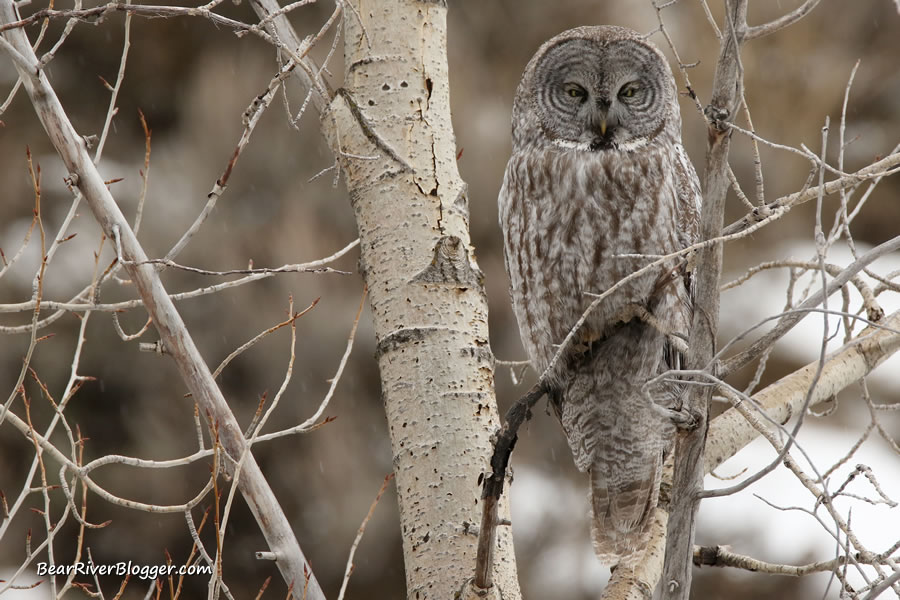
What makes this sighting so unusual here in Utah is great gray owls are not commonly known to migrate southward from their northern territory unless food is scarce.
This nonmigratory species of owl lives mostly in Canada and Alaska and in portions of the northwestern United States, so arriving here in Utah was at the very southernmost extent of its range.
Barn owl
Barn owls are, at least in my opinion, much easier to find than great horned owls. I don’t know if that’s because they are more common or not, but I do find barn owls fairly regularly at certain times of the year.
The most common place I find barn owls is on the Bear River Migratory Bird Refuge. During winter, I find them on the auto tour route as well as on the drive to the loop, up and down on Forest Street. They too are nocturnal, but winter will often cause them to hunt before dusk sets in and sometimes during the day, if needed.
Farmington Bay WMA and Antelope Island are other locations I have found barn owls but not as consistent as the refuge.
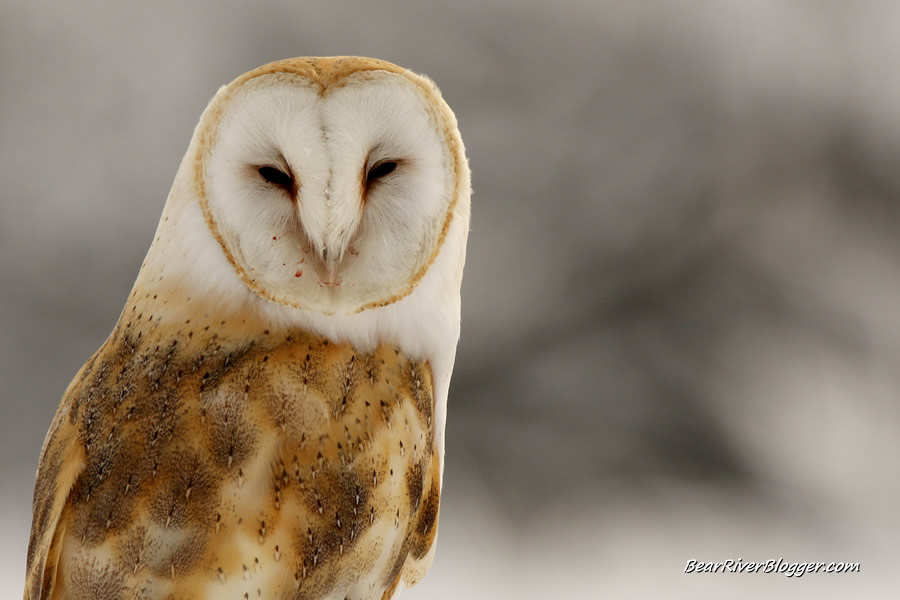
One word of caution, if you see a barn owl hunting during the day, please give it a lot of space and never chase it to get a better look or even a photograph.
Barn owls only hunt during the day when the winter is quite harsh or food is scarce, and these birds are pretty stressed as it is in such conditions. Don’t add to their woes by chasing them for a picture. Let them come to you.
I have found by sitting in one spot with an owl on the wing, many times the owl will work its’ way around and come back by, giving me a great look without disturbing the bird.
Short-eared owl
If the short-eared owl is your fancy, two places come to mind where I regularly find them. Both locations are in Box Elder county, but one is more consistent than the other it seems.
The first location is out near the Golden Spike National Historic Park. This is great short-eared owl country, but lately, it has been a little bit inconsistent for finding this particular species of owl for some reason.
Traveling the roads around the park and around Promontory Mountain itself is where I find these owls most of the time. The area around the national park is the best place to start, but I have found the owls all over the area so I never limit my search to just the park.
The place I find short-eared owls most commonly is on Forest Street heading down to the Bear River Migratory Bird Refuge. The large grasslands along parts of the road are where I usually find them on the wing, but sometimes they can also be found perched on a fence post or road sign.
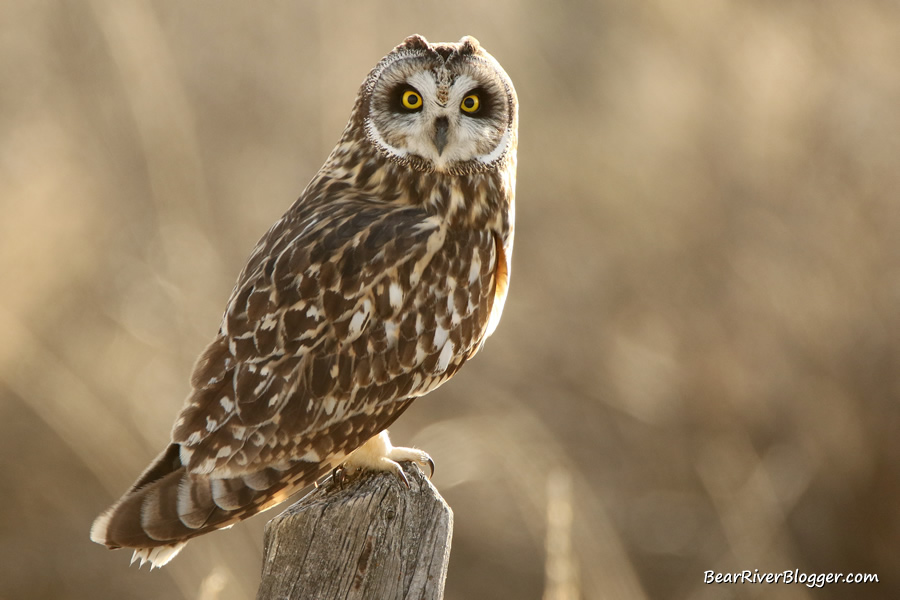
Winter, once again, is when I tend to find these owls and when I usually start looking for them but just as with barn owls, keep a fair and safe distance when watching short-eared owls during a winters’ day. This is when they are most vulnerable to the cold and lack of food, and they definitely don’t need any more stress than they already have.
Other places I have occasionally found short-eared owls are on Antelope Island and also on the Salt Creek WMA in Box Elder County.
Burrowing owl
Finally, an owl that’s a little bit easier to find as well as to photograph because they aren’t limited to hunting solely by night. The burrowing owl is a small owl that frequents parts of northern Utah during the summer and uses underground burrows as nests.
Two locations I know of give great opportunities to find and observe this tiny, yet quirky, little owl. Antelope Island, as many people already know, is commonplace burrowing owls frequent each summer. The park has numerous man-made underground burrows placed all over the park for these unique little owls to nest in.
The exact locations of these nests are not given out to help ensure the birds’ nesting success, but there are several around the general area of the visitors center. Drive slowly and watch for these small birds standing in the grass not too far off from the road.
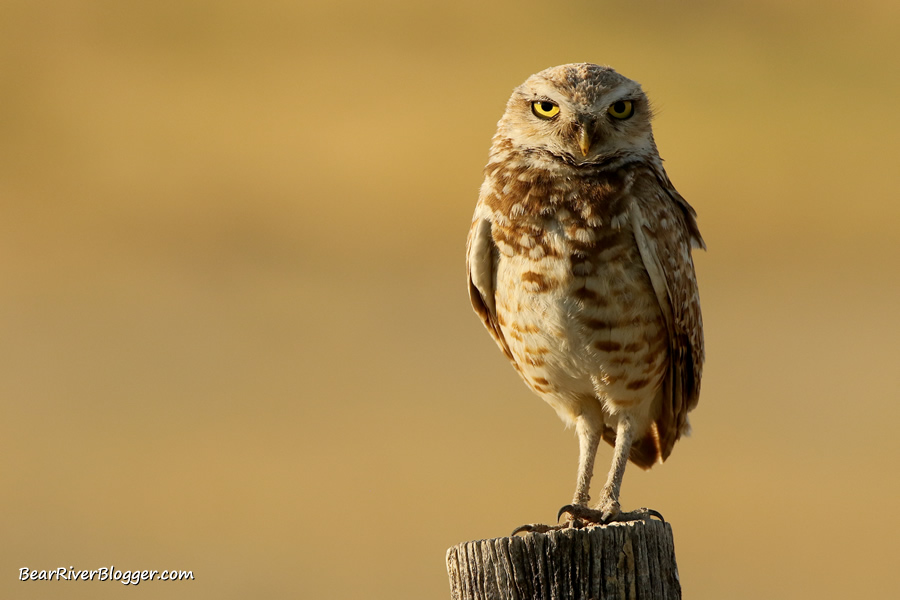
The other location I almost always find burrowing owls during the summer months is, once again, near the Golden Spike National Historic Park. There are numerous places around the park and nearby areas on Promontory where these little birds can be found perched on a roadside post or piece of brush.
I typically find them about an hour or so before the sun starts to set or early in the morning. Burrowing owls are not as nocturnal as other owls, so early morning or late evening are great times to find, observe, and also photograph these birds.
In recent years, a few isolated sightings of burrowing owls have been observed on the Bear River Migratory Bird Refuge. Refuge staff has told me these owls were commonly found on the refuge until the Great Salt Lake flooded the refuge during the 1983-84 winter.
I have personally seen a handful of burrowing owls on the refuge over the years, but it’s still a rare occurrence. Hopefully, they are making a comeback.
Conclusion
Owls are a fascinating type of bird for sure. Finding them, however, can be frustrating at times because of their nocturnal nature. Utah has a record of 14 types of owls being observed with many of them permanent or summer residents.
Finding and observing owls is a great birding experience but also one we must do with a bit of caution. Owls during the winter or on nests can easily be stressed with us being in close proximity so, in both instances, giving the birds a fair amount of space is best for the birds.
Sign up for blog post notifications
We appreciate your readership and suggest if you like this blog to head over to our subscription page and sign up for email notifications for future blog posts.
For more information about owls
let’s face it, owls are awesome. One of the things I like most about nature, in general, and birds, in particular, is learning about them. I have quite an array of bird books I’ve accumulated, and I always suggest others to enhance their knowledge and interest in birds by reading more about our feathered friends themselves.
For owls, I actually have a book specifically on owls pertaining to North America and it has helped me learn more about these fascinating creatures. It’s a great read and a treasured part of my birding library.

